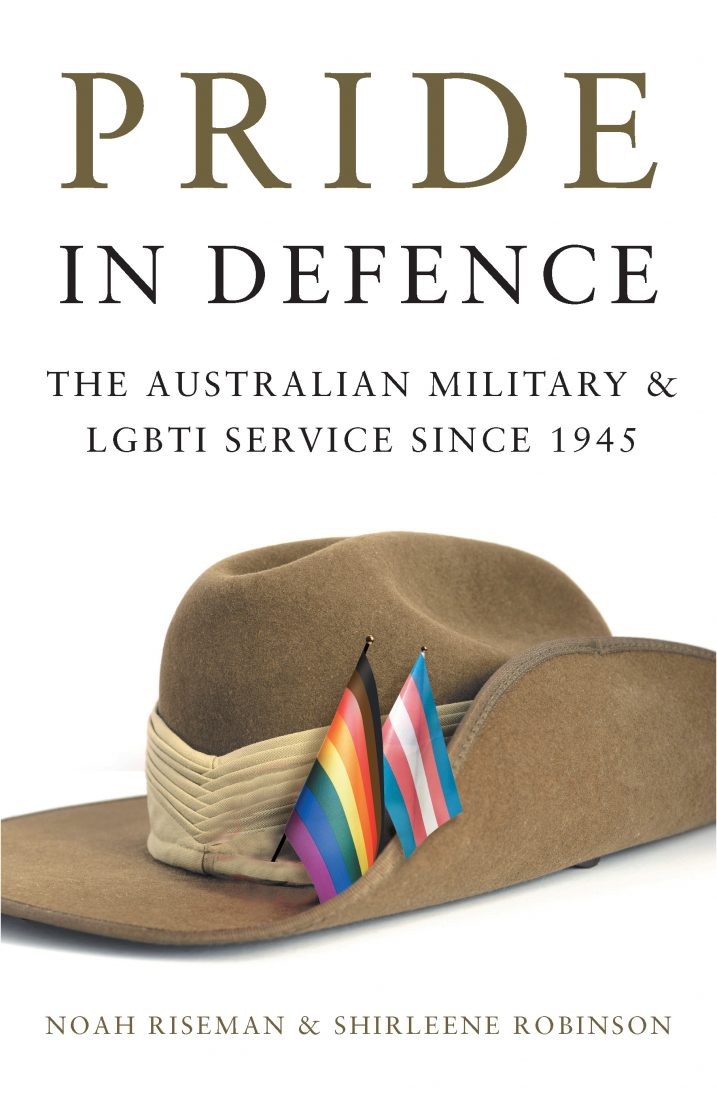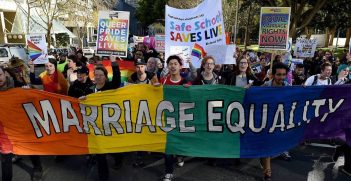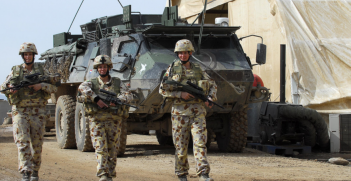Book Review: Pride in Defence – The Australian Military & LGBTI Service Since 1945

Noah Riseman and Shirleene Robinson aim to rectify the unwritten nature of the history of LGBTI experiences in the Australian Defence Force. The book recognises the contributions of the LGBTI community, yet also powerfully illustrates the work still to be done to foster equality.
The service of Lesbian, Gay, Bisexual, Transgender, and Intersex (LGBTI) people in the Australian Defence Force (ADF) remains a controversial topic in the Australian media, yet LGBTI service members haven’t received a lot of attention historically. Noah Riseman and Shirleene Robinson seek to redress this in Pride in Defence: The Australian Military & LGBTI Service Since 1945. In doing so, they argue that the ADF has come a long way in accepting its LGBTI members. There is, however, still a lot to be done in order to achieve full equality.
Riseman and Robinson have collaborated before to write on LGBTI people in the ADF with Serving in Silence? Australian LGBT Servicemen and Women. However, where that was a series of biographies on individual LGBTI service members, Pride in Defence aims to be a more comprehensive history that gives a broader outline on their treatment and experiences.
The basis of Riseman and Robinson’s work is a mass of oral history testimony obtained from current and ex-service members, as well as their family and close friends. While noting that oral history contains a number of pitfalls, they argue convincingly that this testimony supports the few written records available. They place their accounts within a framework of military sociology that reflects on the relationship between the military and society as a whole. This works particularly well given the status of the ANZAC legend and the importance of the ADF in Australian society. Riseman and Robinson also do a wonderful job of giving this testimony pride of place, as it ranges from moving to romantic to occasionally hilarious. The result is a very lively and accessible history.
Pride in Defence is largely chronological, although some chapters overlap as Riseman and Robinson focus on particular aspects of the LGBTI experience in the ADF. The narrative covers the sweep of how LBGTI service members have been treated since the end of the Second World War, a process that was not a straightforward path from persecution to equality. The ADF only formed an official service-wide policy on homosexuality in 1944, which recommended psychological “treatment” or discharge for gay servicemen. The result of this policy, however, was that as long as gay men were discreet and well-liked, they were rarely punished. This was not the case for lesbian servicewomen, who were frequently targeted by military police in traumatic “witch hunts.” This difference was due to a greater anxiety about women in the military subverting the gender roles of Australian society.
By the mid-1970s, however, the ADF expanded its witch-hunt approach to include gay men, seemingly in an inverse relationship to the growing acceptance of Lesbian, Gay, and Bisexual (LGB) people in Australian society. LGB service members were often tailed, had their rooms searched, and were interrogated for hours at a time by military police in an effort to uncover “networks” of LGB people in the ADF. These investigations were often traumatic, as were the dishonourable discharges given to “confirmed homosexuals.”
The persecution of LGB service members ended only in 1992 due to the actions of the Human Rights and Equal Opportunity Commission and the government led by Paul Keating. What is striking from Riseman and Robinson’s oral accounts, however, is how much of a “non-event” this was. While LGB people were able to serve openly, the homophobic culture of the ADF still prevented many from coming out. It has only been through the work of pro-LGBTI groups such as G-Force and the Defence LGBTI Information Service (DEFGLIS) that this culture has changed to allow LGB people to serve openly.
From this narrative, Riseman and Robinson move on to issues that LGBTI service members still face. The first has been the treatment of transgender and non-binary people in the ADF. While, like LBG people, transgender people were not permitted to serve openly, their treatment has been much more uneven. In 2000, the ADF drafted a specific ban on transitioning service members, but this was discussed in medical terms rather than in terms of their identity. This ban was lifted in 2010, but the policy vacuum that followed means that the treatment of transitioning service members is very ad-hoc. Support in their transitions depends on support from medical officers, commanding officers, and fellow transgender service members, as does the acceptance of non-binary service members. Neither are helped by the fact that they have become a target of the culture wars in Australia, as conservative newspapers pronounce outrage over the prospect of the ADF paying for transitions or allowing non-binary people to serve openly.
Riseman and Robinson also briefly deal with the treatment of intersex people in the ADF, whose experiences often overlapped with the treatment of transgender and LGB service people if they didn’t identify with the gender they were assigned at birth. This was made worse by the relative invisibility of intersex people for most of the period studied. Riseman and Robinson’s coverage of intersex people is brief compared to the other letters in LGBTI, but still welcome.
Another ongoing issue that Riseman and Robinson discuss is the status of HIV-positive service members. These service members were not able to be deployed, despite the development of retroviral medication which makes HIV undetectable and non-transmissible. This restriction has recently been lifted, although the broader stigma around HIV remains and can affect HIV-positive service members.
Exploring the treatment of transgender, intersex, and HIV-positive service members means that the latter half of Riseman and Robinson’s narrative places an emphasis on the work that the ADF still has to do in order to achieve full equality. This avoids the kind of triumphant narrative that might arise from a narrower focus, and both authors are also very aware that this progress has not been linear. Overall, Riseman and Robinson’s work opens up a new field both in the history of the ADF and within Australian queer studies, and provides a powerful narrative through the way they use their oral histories.
This is a review of Noah Riseman and Shirleene Robinson, Pride in Defence: The Australian Military & LGBTI Service Since 1945 (MUP, 2020). ISBN: 9780522876741 (paperback), & 9780522876758 (Ebook).
Tom Gardner is a PhD student at the ANU School of History and the National Centre of Biography. They are studying the biography of Australian journalists in early twentieth-century China, with assistance from the State Library of New South Wales as a visiting scholar.
This article is published under a Creative Commons Licence and may be republished with attribution.





